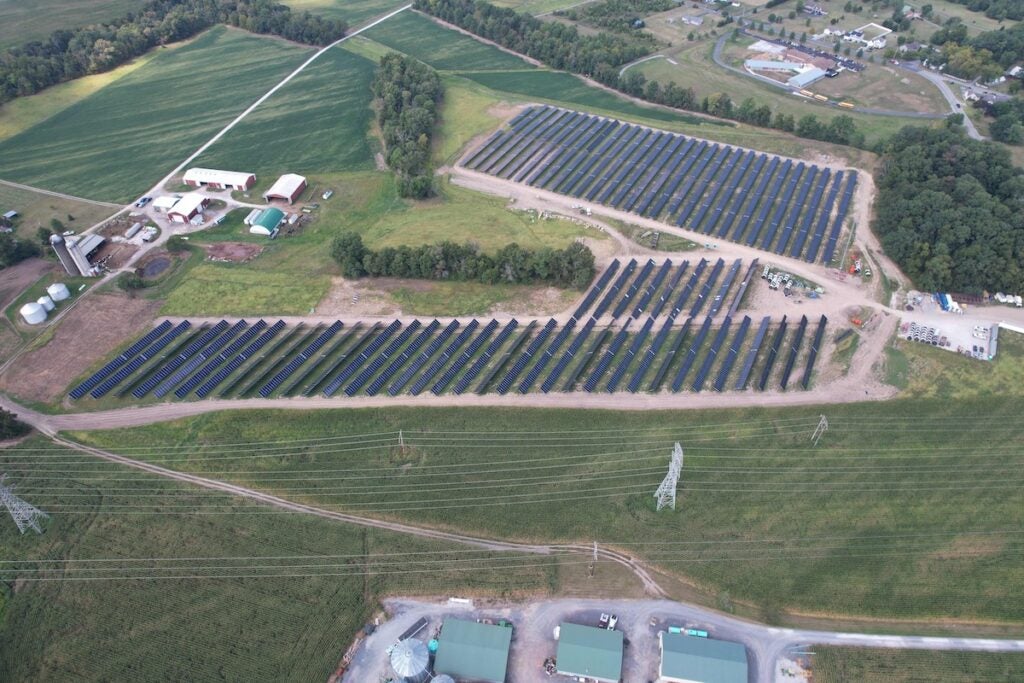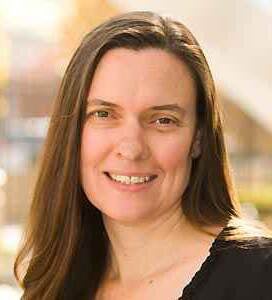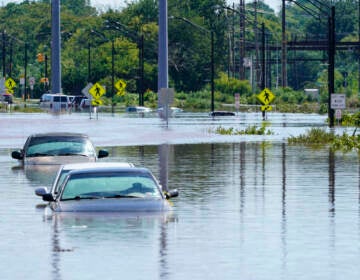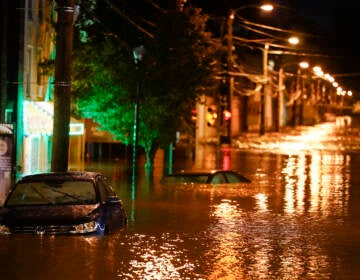Philadelphia will power up to 25% of its buildings with solar energy from Adams County array by early 2024
Philadelphia takes steps toward renewable energy goals with a solar farm in Adams County.
Listen 1:05
An aerial view of the 80 MW solar field in Adams County. About 230,000 panels will help power city-owned buildings, allowing Philadelphia to move closer to its climate goal of 100% renewable energy by 2030. (City of Philadelphia)
This story is part of the WHYY News Climate Desk, bringing you news and solutions for our changing region.
From the Poconos to the Jersey Shore to the mouth of the Delaware Bay, what do you want to know about climate change? What would you like us to cover? Get in touch.
A 230,000-panel solar field in rural Adams County will soon put the city of Philadelphia closer to its goal of powering all of its buildings with renewable energy by 2030.
Spanning about 700 acres, and comprising about a dozen parcels in Straban Township near Gettysburg, the 80-megawatt solar field will provide city-owned buildings with 70 megawatts of renewable energy, or between 23% to 25% of its electricity needs.
Mayor Jim Kenney initiated the project back in 2018, but it was delayed by the pandemic, which brought work stoppages and supply chain issues. At the time, the officials negotiated a power purchase agreement that locked in a price of $44.50 per megawatt, which is about 15% lower than current electricity rates paid by the city.
“We had a lot of struggles with this project because of the timing, and so it’s exciting to now have this project come online and bring us closer to our goals,” said Dominic McGraw, deputy director of energy services and operations for the city’s Office of Sustainability.
He said the project will also allow the city to avoid paying higher rates for natural gas generated electricity, which is subject to market volatility.
“So thankfully, the solar project had locked in rates pre-pandemic and pre-war in Ukraine, and so we were able to take advantage of super competitive rates,” McGraw said.
The warmer than expected temperatures so far this winter, however, have recently lowered natural gas prices.
In addition to locking in those prices for the next 20 years, McGraw says the city has since initiated the Streetlight Improvement Plan, which switches out incandescent bulbs for LEDs in 100,000 street lamps. This will cut street light electricity usage in half, which in turn increases the portion of renewable energy provided by the Adams County solar field to light up buildings like City Hall and the Municipal Services Center, along with individual recreation centers and police stations.
With the city’s current renewable credits accounting for about 8% of its electricity demand, it still has an additional 70% of its power to acquire to meet its goal within the next six years. To do that, it’s planning to put out a second RFP, which McGraw says will likely be solar since offshore wind has hit some roadblocks.
“I know that the benefits to the city are massive,” he said. “And what we’re seeing is that having solar guaranteed for our usage is very practical and an effective way to procure energy.”

Renewable energy is just one part of the equation, however.
“Conservation plays such a key role in all of this,” said McGraw. “There’s a lot of demand coming onto the electrical grid now with the electric vehicle charging infrastructure. And so I think conservation and smart building technology play a key role.”
The Adams County solar farm is owned and operated by Energix, a company with offices in the U.S., Poland, and Israel. The energy itself does not go directly to Philadelphia’s buildings through transmission lines, but rather flows into the power grid operated by PJM. While PECO distributes the energy, the city sources its electricity from WGL, which will provide the renewable energy credits.
Philadelphia-owned buildings are not the only ones about to get a boost in power from the sun. The University of Pennsylvania is about to turn on one of the largest solar fields in the state to help reach its goal of 100% carbon neutrality by 2042. The plant in Central Pennsylvania will provide 220 megawatts of power to light up campus buildings in University City.
While solar power is growing in the state, it remains a small part of electricity generation overall. Pennsylvania reached one gigawatt (1,000 megawatts) of installed solar in mid-December, which is enough to power about 140,000 homes. An additional 550 megawatts is expected to come online by the summer, according to the Public Utility Commission. Nationwide, the Energy Information Administration predicts solar capacity to increase 39% in 2024, which when combined with wind will generate more electricity than coal for the first time.

Get daily updates from WHYY News!
WHYY is your source for fact-based, in-depth journalism and information. As a nonprofit organization, we rely on financial support from readers like you. Please give today.







